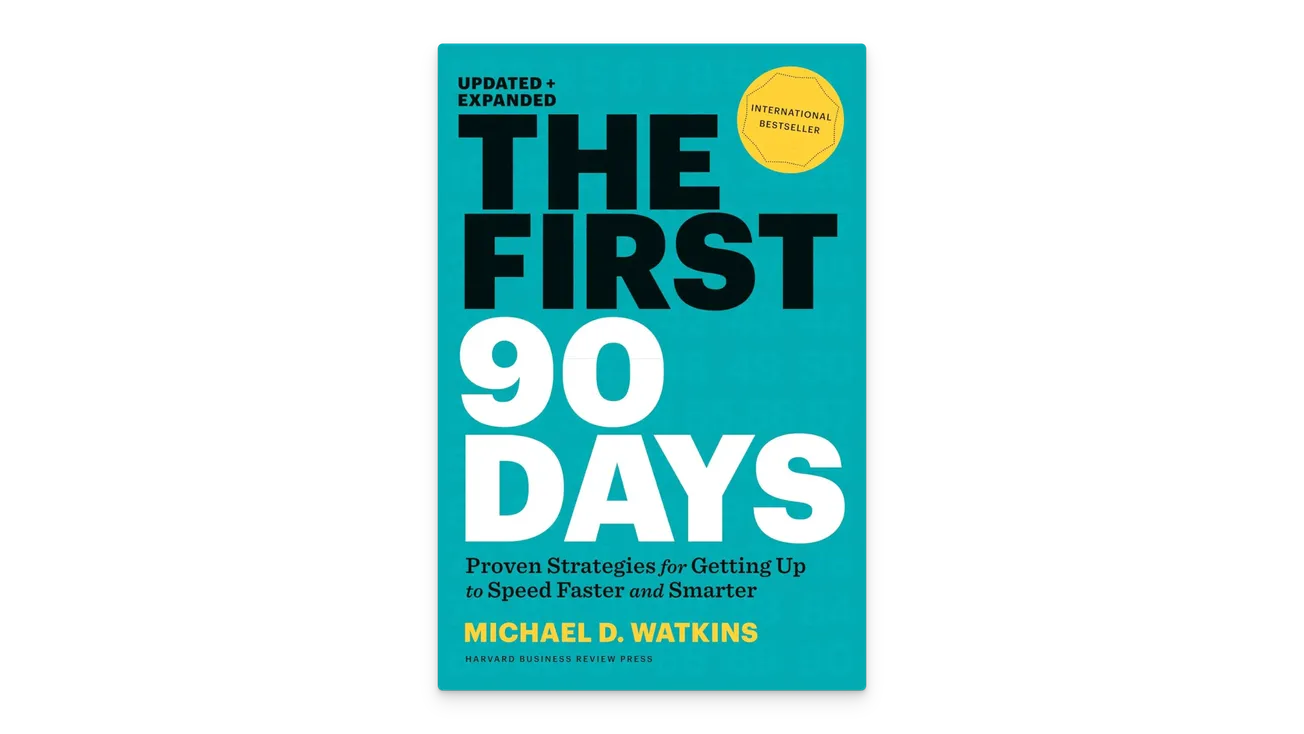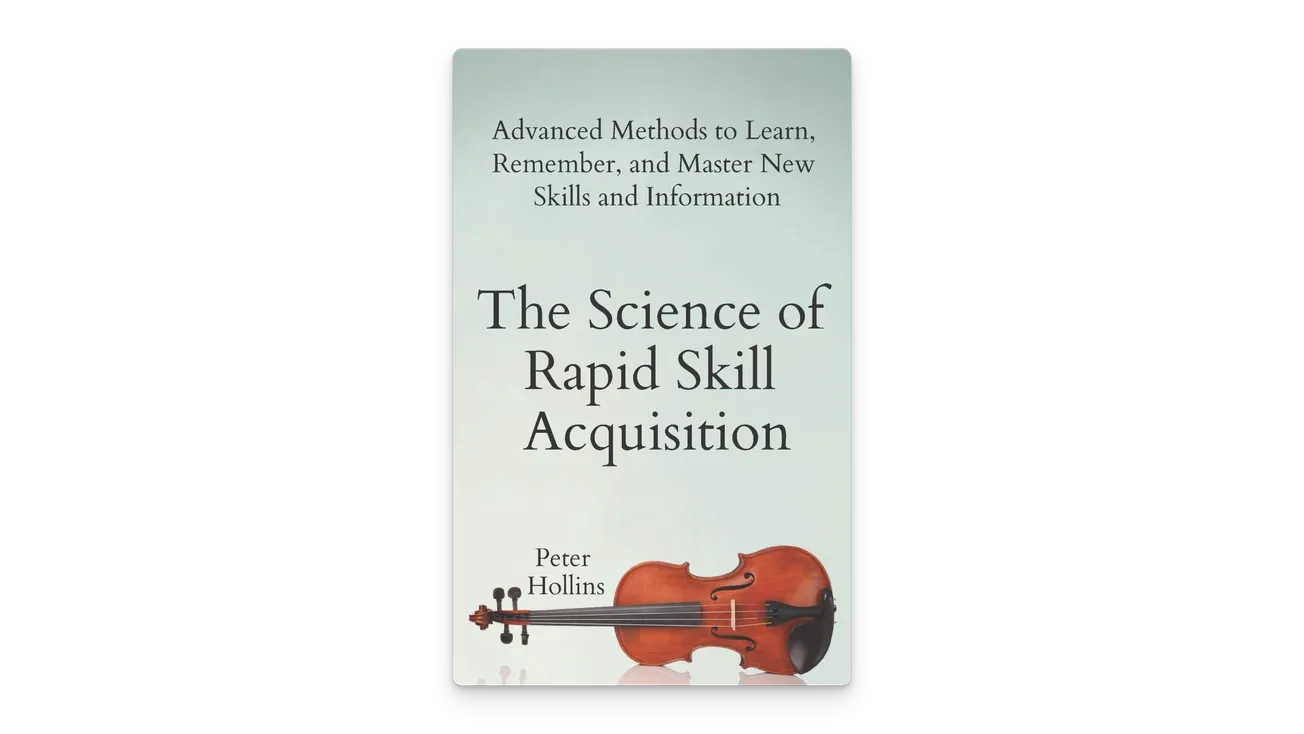Table of Contents
by Michael D. Watkins
"A concise road map that helps executives and managers kick-start a new position with a balanced approach to action and observation."
The First 90 Days (2006) pinpoints the pivotal stage when leaders take on fresh roles, offering practical methods to stay afloat and excel far beyond those opening months. It shows how decisions made early on can shape whether leaders sink, tread water, or truly thrive.
The Big Promise
By combining focused action with dedicated learning, you’ll gain the confidence and insight needed to succeed well after your first quarter in a new role.
Impact & Outcome
- You’ll map out a clear plan to handle transition challenges.
- You’ll create stronger relationships across diverse teams.
- You’ll develop habits that keep you agile and prepared for future shifts.
Who is it for
- Newly hired leaders: looking to establish a solid foundation.
- Mid-career managers: seeking fresh perspectives on leading transitions.
- Executives: aiming to refine their approach in high-stakes, high-visibility roles.
The Author(s)
Michael Watkins is a professor of leadership at the IMD Business School. Known for his work on leadership development, he has written several influential books, including Your Next Move and Predictable Surprises.
TL;DR
A purposeful balance of doing and learning helps leaders adapt, earn trust, and shape healthy team dynamics from day one.
Key Ideas
1. Balance action with learning to achieve success
Balance your desire to get things done with genuine observation, so you’ll be embraced by your new environment rather than pushed away.
When leaders focus solely on accomplishments early on, they risk missing the culture cues that shape how teams operate. By dedicating time to listen and watch, new managers can align actions with group values and expectations.
Expanded repeatedly since its 2006 debut, The First 90 Days has become a fundamental guide for ensuring a smooth move into unfamiliar territory. It emphasizes preparation, solid strategizing, team cohesion, and self-awareness—vital elements for tackling new responsibilities without stumbling.
Leaders often charge in, determined to deliver immediate results. Yet overlooking how people already work together may create friction, leaving teams feeling overlooked. A parallel focus on understanding the current setup can make early wins more meaningful and sustainable.
In this short summary, a central takeaway is that pairing your drive for quick progress with a deep sense of context strengthens your leadership well beyond the early “honeymoon” stage. By acknowledging hidden nuances, you’ll avoid early stumbles that can erode trust.
Imagine a manager who jumps in and changes established workflows without first learning why they exist. That snap decision might alienate team members, but if the manager invests time in gathering insights, those same employees will likely back new initiatives.
2. Accelerated learning is the first step to building your plan
Give yourself structured time to understand the lay of the land before making big changes.
A new position brings fresh challenges, from different operational styles to new team dynamics. Leaders who actively seek out this information show they respect what’s already in place, lowering the chances of conflict.
Allison’s story is a perfect example: she was a star in marketing but stepped into a new setting that required different leadership methods. She tried to uphold old approaches, aiming to demonstrate efficiency, only to see pushback from her technical staff.
Her attempts to charge ahead left her out of touch with key processes she hadn’t experienced before. Realizing her error, she put effort into one-on-one sessions and smaller discussions to uncover the deeper reasons behind established routines. Through that process, she regained trust and improved communication.
Conscious, proactive learning reassures teams that their insights matter. When people see a leader engaged in genuine curiosity, they’re more open to changes, which leads to smoother transitions and lasting respect.
Allison’s approach shifted: she began asking relevant questions and setting realistic milestones that reflected the unique workflows of her new team. The crisis that initially threatened her role ended up boosting her credibility because she showed an authentic willingness to learn.
3. For an effective plan, consider your strengths as well as your weaknesses
Being aware of your own leadership style—and its limits—helps you adapt to new challenges.
Every leader has default methods of communication and motivation, but those methods don’t always match a different organizational culture. Taking a critical look at your skills and shortcomings lets you adjust in ways that benefit everyone involved.
If your signature strength is detailed planning, for example, you might need to develop consensus-building skills for a project that spans multiple departments. Without recognizing that gap, you risk alienating collaborators who value open dialogue over firm directives.
It’s often tempting to prove yourself fast, but too much haste can mask crucial learning opportunities. By staying aware of your leadership blind spots, you’ll respond in ways that build rapport instead of tearing it down.
Picture a new supervisor who looks past their preference for rigid processes and meets the team halfway, encouraging broader input. This adjustment paves the way for a more cohesive environment, where members trust that their leader values their expertise.
DIG DEEPER
Quotes
- "The earliest steps in a new role can shape an entire tenure."
- "Strong leaders observe as much as they direct."
Key Takeaways
- Carve out time for genuine listening and inquiry in your first months.
- Ask open-ended questions to grasp how your new setting truly operates.
- Recognize that not all past strengths apply seamlessly in fresh contexts.
- Address blind spots before they affect relationships with your team.
- Maintain a thoughtful balance between immediate wins and long-term adaptation.
Recommended Reading
- Your Next Move: Shows how to confidently navigate transitions in leadership roles.
- Predictable Surprises: Highlights how leaders can spot looming issues and address them proactively.
Glossary
- Leadership Transition: The process of stepping into a new leadership role, requiring rapid learning and adaptation.
- Consensus Building: A collaborative approach that encourages shared input for decision-making.
- Contextual Awareness: Understanding the culture, history, and processes that influence an organization’s day-to-day work.
- Blind Spots: Unrecognized weaknesses that undermine leadership effectiveness.
- Credibility: Trust earned through consistent, respectful, and informed actions.




